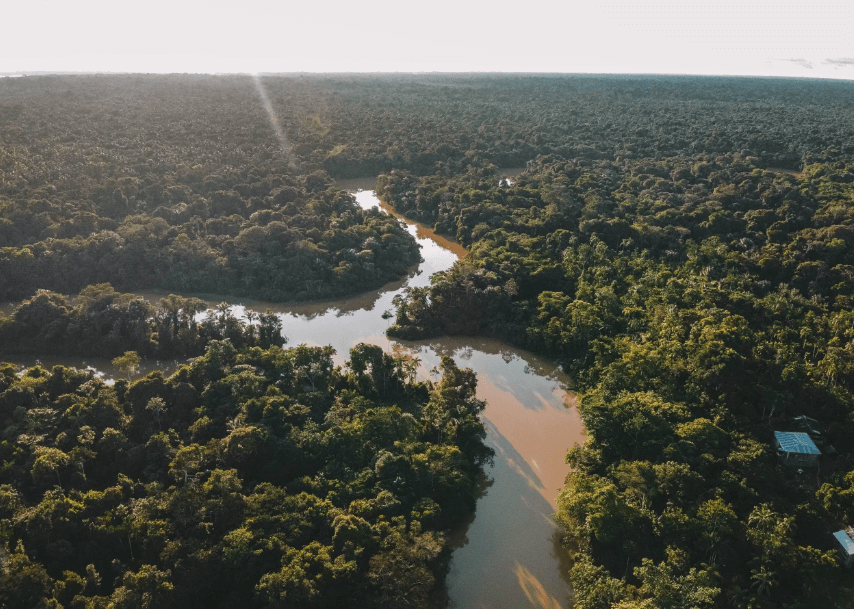Welcome to the awe-inspiring world of Colombia National Forest, the renowned Amazon Rainforest. As one of the most biodiverse regions on the planet, the Amazon Rainforest holds a significant place in Colombia's natural heritage. In this article, we will delve into the remarkable features, ecological importance, cultural significance, and ongoing challenges faced by this magnificent ecosystem. Join us on this virtual journey as we unveil the secrets and wonders of the Colombia National Forest.
The Amazon Rainforest, often referred to as the "lungs of the Earth," is a vast expanse of dense vegetation spanning several countries in South America. Colombia is privileged to host a significant portion of this natural wonder. Stretching across the southern regions of the country, the Colombian Amazon showcases breathtaking biodiversity, vibrant cultures, and invaluable resources.
Importance of the Amazon Rainforest
The Amazon Rainforest plays a pivotal role in maintaining the planet's ecological balance. Its lush vegetation acts as a carbon sink, absorbing vast amounts of carbon dioxide and mitigating climate change. Moreover, it serves as a habitat for countless species, many of which are endemic and found nowhere else on Earth.
Biodiversity in the Amazon Rainforest
The Amazon Rainforest is a treasure trove of biodiversity, harboring an estimated 10% of the world's known species. From magnificent jaguars and colorful macaws to elusive anacondas and unique plant species, the Amazon Rainforest offers a glimpse into the marvels of nature's creativity.
Indigenous Communities in the Colombia National Forest
For thousands of years, indigenous communities have called the Amazon Rainforest home. These communities have deep-rooted connections to the land, relying on its resources for sustenance and spiritual well-being. Their traditional knowledge and sustainable practices contribute to the preservation of the rainforest's delicate equilibrium.
Environmental Threats to the Amazon Rainforest
Sadly, the Amazon Rainforest faces numerous environmental threats, largely driven by human activities. Deforestation, primarily for agricultural purposes, poses a significant challenge to the integrity of this precious ecosystem. Illegal logging, mining, and the expansion of infrastructure further exacerbate the situation.
Deforestation and Its Impacts
The alarming rate of deforestation in the Amazon Rainforest has far-reaching consequences. It leads to habitat loss for countless species, disrupts local ecosystems, and releases substantial amounts of carbon dioxide into the atmosphere. The ramifications extend beyond the region, impacting global climate patterns and biodiversity.
Conservation Efforts for Colombia National Forest
Efforts to protect the Amazon Rainforest and mitigate deforestation have gained momentum in recent years. Local communities, national governments, and international organizations collaborate on various conservation initiatives. Programs focus on sustainable land management, reforestation, and empowering local communities to become stewards of their environment.
Sustainable Tourism in the Amazon Rainforest
Sustainable tourism presents a promising avenue to support the conservation of the Amazon Rainforest. Responsible travelers have the opportunity to experience the rainforest's enchantment while contributing positively to the local economy and environmental preservation. Ecotourism initiatives provide immersive experiences that raise awareness about the fragility and importance of the region.
Research and Scientific Studies in the Amazon Rainforest
Scientists and researchers from around the world flock to the Amazon Rainforest to study its intricate ecosystems and unravel its mysteries. Field studies shed light on the interconnections between flora, fauna, and the environment. Understanding these complex relationships is crucial for effective conservation strategies and sustainable development.
Economic Significance of the Colombia National Forest
Apart from its ecological and cultural significance, the Amazon Rainforest also holds immense economic value. The region provides livelihoods for local communities through sustainable practices such as agroforestry and the harvest of non-timber forest products. Moreover, it contributes to Colombia's economy through industries such as eco-tourism and pharmaceutical research.
Conclusion
Colombia's National Forest, the Amazon Rainforest, stands as a testament to the wonders of nature and the resilience of indigenous cultures. While facing environmental threats, efforts are underway to safeguard this invaluable ecosystem. By raising awareness, supporting sustainable practices, and appreciating its beauty, we can contribute to the preservation of the Amazon Rainforest for generations to come.
FAQs
- What is the Amazon Rainforest?
The Amazon Rainforest is a vast expanse of dense vegetation spanning several countries in South America, known for its exceptional biodiversity and ecological importance.
- How large is the Amazon Rainforest in Colombia?
The Amazon Rainforest in Colombia covers approximately 35% of the country's total land area.
- What are the major environmental threats to the Amazon Rainforest?
The major environmental threats to the Amazon Rainforest include deforestation, illegal logging, mining, and the expansion of infrastructure.
- How are indigenous communities connected to the Amazon Rainforest?
Indigenous communities have deep-rooted connections to the Amazon Rainforest, relying on its resources for sustenance and spiritual well-being. They contribute to its preservation through sustainable practices and traditional knowledge.
- What can individuals do to contribute to the conservation of the Amazon Rainforest?
Individuals can contribute to the conservation of the Amazon Rainforest by supporting sustainable tourism, purchasing responsibly sourced products, and raising awareness about the importance of preserving this unique ecosystem.
References
- WWF Colombia. (n.d.). Amazon Rainforest. Retrieved from https://www.wwf.org.co/que_hacemos/amazonia/
- Rainforest Foundation US. (n.d.). The Amazon Rainforest. Retrieved from https://rainforestfoundation.org/amazon-rainforest/
- National Geographic. (n.d.). Amazon Rainforest. Retrieved from https://www.nationalgeographic.com/environment/habitats/amazon-rainforest/
- World Wildlife Fund. (n.d.). Amazon Rainforest. Retrieved from https://www.worldwildlife.org/habitats/amazon-rainforest
